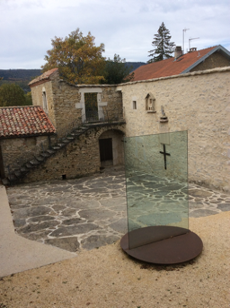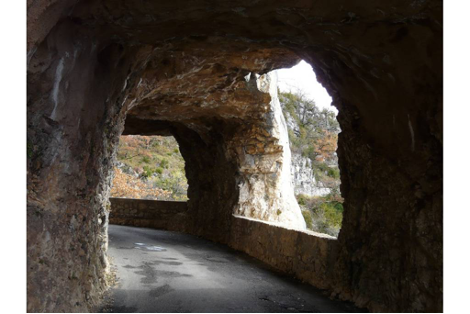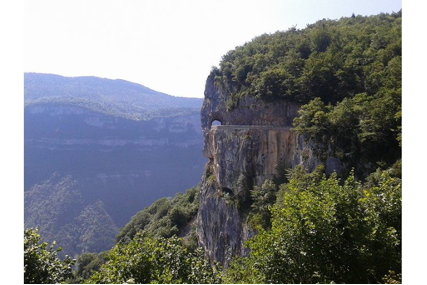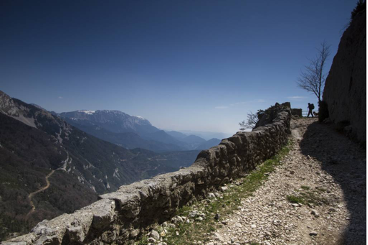Secrets of the Vercors
You’re in Paris any time soon… and need a break from the bright city lights. You long for a spell in rural France. The ‘France’ of nostalgic books and movies. Somewhere secluded, charming, slow-paced, and beautiful. La France profonde, that’s what you’re looking for— Forgotten France. Put the Vercors at the top of your list.
Learning about Vercors…
It’s a stunningly attractive regional park just to the west of Grenoble. A vast, high plateau of deep ravines, craggy cliffs, and dark forests. Many of the villages are perched on rocky outcrops with amazing views.
The roads are not for the faint-hearted. You’ll get there by way of exhilarating mountain passes that climb through an endless succession of tunnels blasted into sheer cliff faces. At every bend, there are vertiginous drops to rivers frothing and racing in the ravines far below.
Spectacular roads not for the faint-hearted.
One of the most spectacular of these is the road through the Gorges de la Bourne. It leads from Pont-en-Royanne, with its intriguing houses built into the limestone rock face, to the winter sports village of Villard-de-Lans.
Turn south and you’re on a narrow road leading up through the mountains towards Vassieux. Cattle and sheep in prime condition stare at you from their high pastures as you drive by. The heights are peppered with isolated farmsteads—many of them restored after they were burnt down. Several of the villages you go through have a strange sameness about them. Many were restored at the same time. Every now and then you may notice a small marker with a Cross of Lorraine or a plaque with a list of names.
You’ll pass through large pine forests with smaller groves of deciduous trees sharing the heights. Their brighter foliage is a marked contrast against the dark green conifers.
Les Grands Goulets, is a spectacular gorge so deep and narrow that it’s sometimes difficult to see the sky above. A little further along, you enter the pretty village of La-Chapel-en-Vercors with its Martyrs’ Wall.
A nearby narrow road leads to the start of a rocky path leading to a cave in the cliffs. It once doubled as a secret hospital. When it was discovered the patients and doctors were shot and their bodies were thrown off the cliffs.
But wait!
Martyrs’ Wall?
Farms and villages burnt to the ground?
People shot?
What’s this all about?
Well, hard as this is to believe in such a beautiful environment, only a little more than seventy years ago, France was in the grip of savages. From 1939 to 1944 the country was occupied by the Nazis.
Secrets of the Vercors
When the Allies landed in Normandy, many French partisans misjudged the situation. They thought the war was over and won. And when the Americans invaded Provence the local maquisards declared the Vaucluse independent. They called it the ‘renaissance’ of the French Fifth Republic. A futile move with tragic results. The Nazi beast was enraged. The repercussions were savage and severe.
In July 1944 the Nazis launched an ariel attack on the Maquisards who had gathered in the mountainous parts of the Vercors. It was a one-sided affair. 10,000 battle-hardened German soldiers swept onto the plateau in gliders. The French were poorly armed and badly trained. The outcome was inevitable. One hundred and eighty-seven tombs in the Nécropole De La Résistance just outside Vassieux-en-Vercors bear witness to the tragedy that unfolded.
Happily, the end of World War 2 saw a pragmatic realignment of European politics and the establishment of a new order. Traditional enemies became allies—either in a military alliance against the Eastern Bloc, or economically against the Americans. Even France and Germany buried the hatchet. The countries of Europe decided that cooperation was better than rivalry. They focussed on working together to overcome post war financial and political crises. The concept of a united Europe took root and in 1957 the European Economic Community or Common Market was launched.
Many commentators believe that this economic and political union has given a united Europe a much more powerful voice in world affairs than even the strongest member countries would have had acting on their own. And many historians believe that this has contributed to over seventy years of relative peace. Since the end of WWII, there have been fewer wars fought on the continent than at any time since the Roman Empire.
Brexit – what will it mean?
But Brexit has changed all this.
Forty years of unity were thrown into reverse when the referendum was won by a handful of leave votes. And four years later the nation is still squabbling about what the result might mean for the UK, the economy, and the morale of the British nation.
There is no consensus on what results, this reactionary move might bring. It certainly has the potential to disrupt UK economics. And therefore the economy of the European Union. And, some say, it will have a ripple effect on the whole of World trade.
Unfortunately this means all of us.
So, the question arises, how severe will the Brexit blow be and how long will it last?
Only time will tell.
Were you previously aware of the secrets of the Vercors? Have you ever been there? We’d love to hear from you in the comments below.
Image Credits:
1.- 3. Necropole, Martyr’s Wall & Plaque – Copyright Ray Johnstone
4.- 8. Mountain passes via Vercors Drom Tourist Office














